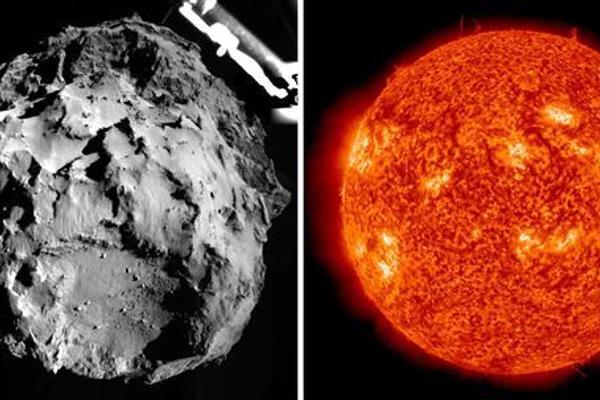Comet 67P, robot lab Philae’s alien host, nears Sun
PARIS - Agence France-Presse


Scientists hope the heat of perihelion, when the comet comes closest to the Sun in its orbit, will cause the enigmatic traveler to shed more of its icy crust. If so, it could spew out pristine particles left from the Solar System’s birth 4.6 billion years ago, they believe.
And if Comet 67P/Churyumov-Gerasimenko undergoes this dramatic change, Europe’s Rosetta spacecraft will be orbiting nearby, ready to pounce on any clues of how our star system came into being.
“This is the time most of the action happens,” said European Space Agency (ESA) expert Mark McCaughrean of the weeks-long peak of comet activity.
The ancient celestial voyager will reach its closest point to our star, some 186 million kilometers, at about 0200 GMT on Aug. 13, before embarking on another 6.5-year egg-shaped orbit.
Things have been heating up for weeks, with gas and dust blasting off the comet’s surface as solar heat transforms its frozen crust into a space tempest.
This is “the greatest opportunity to catch material and analyze it if you’re looking for rare species of molecules,” especially organic ones, McCaughrean said, adding that they want to look at the more pristine material that might emerge from beneath the layer of icy dust stripped from the surface.
Most exciting would be if the duck-shaped comet’s “neck,” which hosts a 500-meter crack, were to break in two to reveal the raw insides.
In any scenario, ground teams working on the 20-year-old Rosetta mission will likely have to wait weeks, if not months, to analyze new data.
